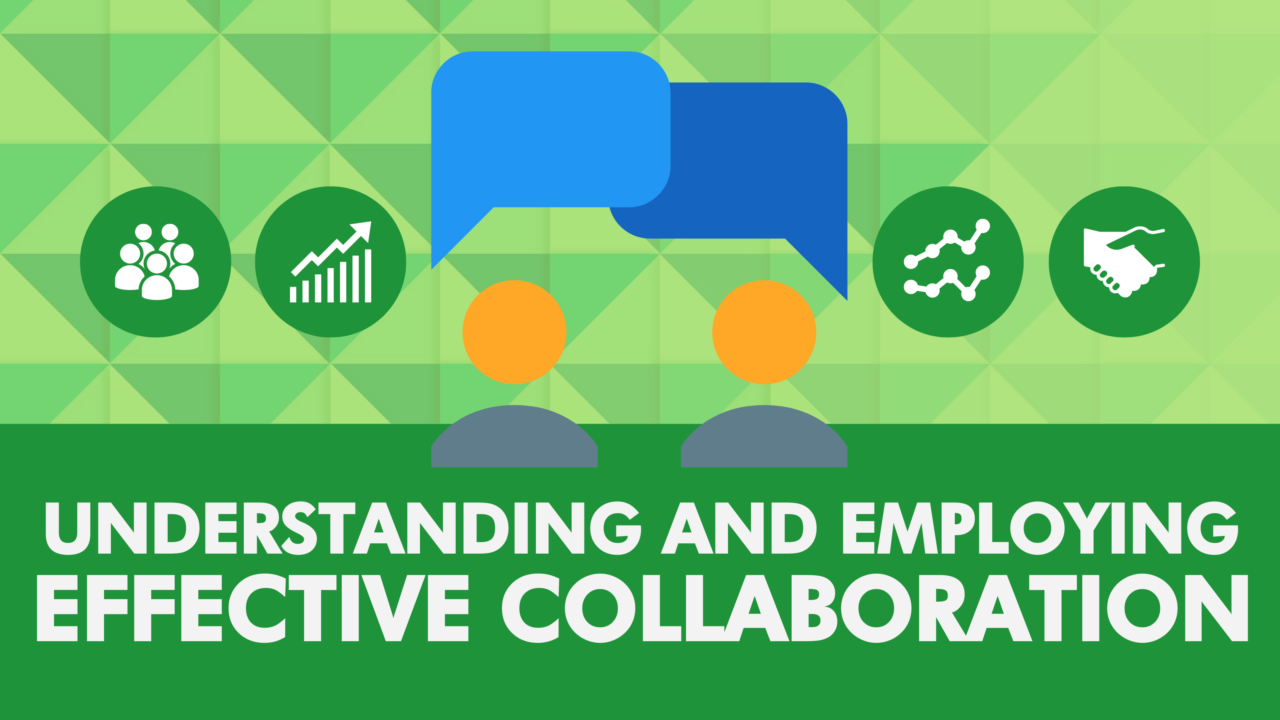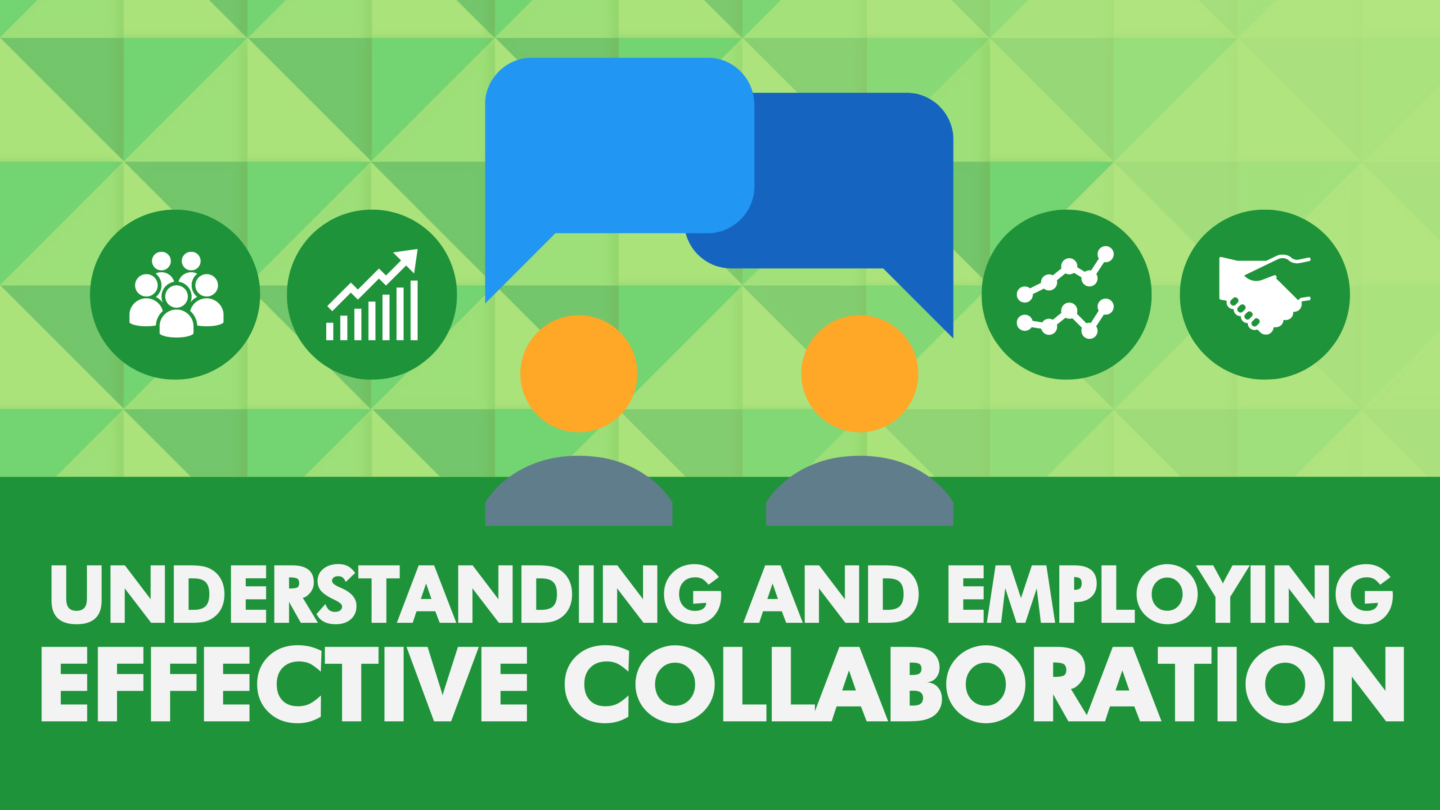
Understanding and Employing Effective Collaboration
Most people, when they hear the term “collaboration”, think only of more than one person working together. While that isn’t totally wrong, there is actually a lot more to it than just working together – and to achieve effective collaboration, you first must know what it is.
What does effective collaboration entail?
Collaboration not only means working with other people within your team, but also using modern technology to work with other teams, regardless of where they’re located. However, it is more than just a group of people having a conversation. Effective collaboration yields a specific, desired result – often, more quickly and cost-efficiently than could otherwise have been done by a single individual.
Why is effective collaboration important?
When performed and supported correctly, collaboration can save a business both time and money. For example, there are a variety of technologies available that allow multiple people from all over the world to share the same information at the same time. The use of online meeting platforms and work-status driven technologies allow the exchange of documents, photos, video calling, etc. which reduces the need for expensive business trips, all the while improving meeting efficiency. With a focus on a common goal, teams will complete projects much more effectively than single individuals, saving time and money.
Collaboration also give everyone involved the chance to have their opinions and ideas weighed equally with everyone else’s. Since many collaborations will involve a varied group of both personalities and experience levels, team members will also learn to understand and respect diversity, as well as the advantages it offers.
We’ve established the importance of effective collaboration, but how exactly do you make it happen in your workplace?
Tips to drive effective collaboration
1.Ensure you have great communication
Communication is one of the keys to successful collaboration. Ensuring that everyone on the team shares a common purpose and shared mandate should be made unequivocally clear, and continue to be established with each new member who joins the team.
First and foremost, it’s important that everyone on the team knows each other, at least to some degree. This can be most simply accomplished by engaging team members in team development activities, which can be reviewed whenever needed (e.g.; start of a team meeting or at a special off-site). The more familiar people are with their teammates, the more opportunity for trust and soliciting of opinions and input will occur.
In order to make sure you get the most effective collaboration possible, all team members must have a clear set of position-specific roles and responsibilities. Aspects of each individual’s jobs must be communicated within and amongst the team membership in order to clarify and build understanding on who is responsible for what within the team environment. Transparency is vital when sharing this information as it clarifies where (or with whom) information can be found.
Encourage open dialogue amongst the team members – this should go both ways, as a manager who is able to take suggestions and implement changes based on the opinions of the team will help foster a collaborative environment.
2. Choose your team wisely
When choosing team members for any given project, care should be taken to select the best fit possible. Try to look for the following:
Engaged and reliable employees: The best way to keep an employee engaged is to ensure that they know their role, and its value to the group. Making it clear that the team members rely on each other to each do their part also adds more motivation to accomplish the goals set out.
The right leader for the job: Effective collaboration depends on fostering a supportive and open working environment. The project manager needs to be able to communicate with the team, assign each member jobs in a way that maximizes their strengths, and ensure deadlines are met. They have to be able to accommodate team members, but also resolve any conflicts or disputes that may arise.
Diversity: It’s important to have a cross section of both people and skills in a group, in order to encourage shared experience and multiple points of view being discussed. This includes generational and experience level ranges. If everyone on a team has the same or similar viewpoints, there will be a lack of inspiration for new thinking. Debate and discussion – as well as the ability to compromise – will lead to more comprehensive and better solutions.
Team player attitude: This one mostly speaks for itself. You need to have team members who are willing to put the best interests of the group ahead of their own in order to accomplish the tasks at hand. Non-team players can lower morale and productivity – see Challenges below.
3. Strive for equality
An important aspect of effective collaboration is not inhibiting equality. Each person and idea must be given equal weight. It should also be understood that there should be no fear of judgement or repercussions for expressing an idea. While there will be a project manager, they should not be the lynchpin for all decisions – if one person decides everything, the sense of unity among the collaborators will be lost.
4. Stay energized
Keeping collaborative discussions as focused and motivating as possible will promote a high level of energy and engagement, which will lead to better results. This can be achieved by incorporating physical aspects into the project – writing on a whiteboard, moving around in groups to have discussions, even just taking time to stretch.
5. Have an action plan
Discussion without a plan is just a conversation. In order to have effective collaboration, the plan must cover a variety of points:
- What role is assigned to each member of the team?
- What time frame are you working in?
- When will the group reconvene to follow up on the progress of the project?
- How will this project impact the business?
- How will you measure progress?
Answering those questions is paramount to the collaborative process. Knowing where they stand and what they need to do will motivate team members and raise productivity.
6. Constantly improve on the collaboration
Once you have your team and your action plan, you should continue looking for ways to improve on the collaboration. A good way to do this is to set the example of what you would like to see – create a supportive environment, encourage open dialogue, and set clear, achievable goals to raise motivation. Although you will have defined roles in your action plan, you can assess team members and give them more responsibilities if you feel they are capable of handling them.
Ensure there is a platform for discussion available for all team members. Involve them in any major decisions, enable them to report on their statuses in real-time (via online technologies), and keep any remote parties in the loop. This can all be simplified by also making sure the team has access to collaboration tools appropriate to the task.
Challenges
While effective collaboration is beneficial to businesses, it isn’t without some challenges. Below is a table of the most common ones, and solutions.
| Challenge | Solution |
| Information overload: i.e. too many emails coming in, too much information coming from too many sources, too many options for tools to use, etc. | There is no “right” way to effectively collaborate, but knowing your team members’ strengths will allow you to select tools that work best for them |
| No immediate results | Often, collaboration is needed for larger, more time-consuming projects. Letting your team know that – while it may appear to be slow-going – their efforts are yielding results, will help motivate them to continue |
| Collateral costs: learning new skills, acquiring new tools and tech | It’s a fact. The efficiencies of new skills and tools are an investment; they will effectively reduce the time spent on the project, which in turn will save money |
| Lack of motivation: despite best efforts, some team members may turn out to be negative, which can impact team morale | Have one-on-ones with employees who don’t seem to have the necessary attitude for collaboration. Explain to them how the project will be beneficial for them and the business. Don’t hesitate to reassign if the behavior persists. |
Final Thoughts
Using effective collaboration is vital for a company’s success. Teams able to complete projects in less time means less costs, more productivity, and more motivation to achieve goals – something definitely worth the time to do right.




